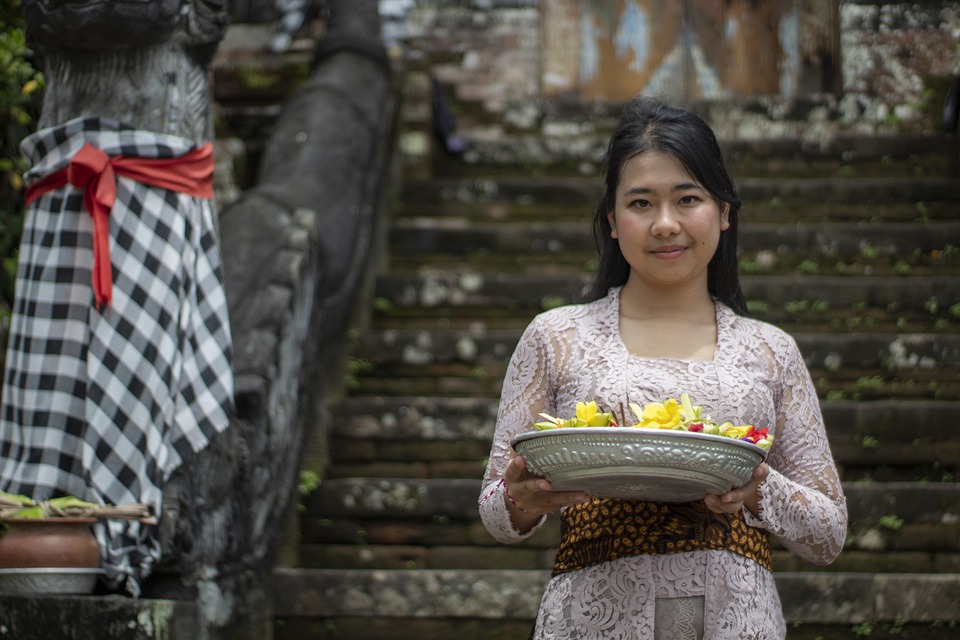Bali, an Indonesian paradise renowned for its stunning beaches and vibrant culture, also boasts a culinary landscape that is as diverse as the island itself. This guide will take you on a comprehensive food tour of Bali, showcasing a journey that spans the realm of street food to the sophistication of fine dining. Through this gastronomic exploration, visitors can indulge in the rich flavors and culinary traditions that define Balinese cuisine.
Starting with the street food scene, Bali offers a plethora of local delicacies that are both affordable and bursting with flavor. One of the most iconic street foods is “nasi goreng,” or Indonesian fried rice. This dish typically features a base of rice sautéed with sweet soy sauce, vegetables, and a mix of proteins such as chicken, shrimp, or tofu. Vendors often serve it with fried eggs on top, making it a satisfying meal at any time of day. Found at warungs (small local eateries) and food stalls, nasi goreng is a staple that reflects the island’s culinary heritage.
Another must-try street food item is “sate lilit,” a distinctive Balinese variation of satay. Instead of skewering chunks of meat, minced meat is mixed with grated coconut and spices, then wrapped around lemongrass sticks or bamboo skewers. The mixture is grilled to perfection, imparting a smoky flavor that complements the spice blend. Enjoying sate lilit enhances the experience of Bali’s rich culinary culture, as it is often accompanied by traditional dipping sauces.
For those with a sweet tooth, “pisang goreng,” or fried bananas, are a delightful treat. These crispy, golden bites are made by dipping ripe bananas in batter and frying them until they are perfectly crispy on the outside and soft on the inside. Often served with a drizzle of honey or chocolate sauce, pisang goreng is a beloved snack that can be found at numerous food stalls across the island.
As the culinary journey moves from the streets to finer dining establishments, Bali does not disappoint. The island is home to an array of upscale restaurants that offer exquisite dining experiences. One standout is “Motel Mexicola” in Seminyak, a vibrant establishment that marries authentic Mexican cuisine with a lively atmosphere. Guests can indulge in dishes such as tacos and enchiladas, while enjoying live music and entertainment. The colorful décor and festive ambiance make it a perfect spot for both food and fun.
For a more sophisticated dining experience, “La Silva” in Uluwatu presents an elegant setting with breathtaking ocean views. The restaurant specializes in fresh seafood and local ingredients, expertly combining Balinese flavors with international culinary techniques. Dishes like grilled snapper with coconut and lime sauce illustrate how La Silva elevates traditional cuisine while maintaining a commitment to sustainability and local sourcing.
No comprehensive food tour of Bali would be complete without exploring the island’s vibrant café culture. Places such as “Alchemy” in Ubud offer a unique twist to healthy eating. Renowned for its raw vegan offerings, Alchemy features a buffet filled with colorful salads, smoothies, and desserts, all made from organic ingredients. It is a haven for health-conscious travelers who still wish to immerse themselves in the local food culture.
Moreover, no visit to Bali would be complete without experimenting with “bebek betutu,” a traditional Balinese dish. This dish consists of duck marinated in a mixture of spices, wrapped in banana leaves, and slow-cooked to tender perfection. Many restaurants offer this delicacy, allowing visitors to savor the intricate flavors painstakingly prepared through a time-honored process.
As the culinary adventure in Bali unfolds, one cannot overlook the numerous cooking classes available on the island. These classes offer a unique opportunity to learn about Balinese ingredients, traditional cooking methods, and local recipes. From mastering the art of making sambal (spicy chili paste) to preparing iconic dishes such as rendang, these interactive sessions deepen one’s appreciation of Balinese cuisine.
In conclusion, exploring Bali’s culinary landscape offers a delightful blend of experiences, from the vibrant street food stalls serving local delicacies to high-end restaurants that showcase innovative interpretations of traditional flavors. This culinary journey through the island not only satisfies the palate but also enriches the understanding of Bali’s culture and traditions, making it an unforgettable aspect of any visit to this enchanting destination. Whether one is seeking a quick bite from a street vendor or a lavish meal overlooking the ocean, Bali truly caters to every culinary desire.
